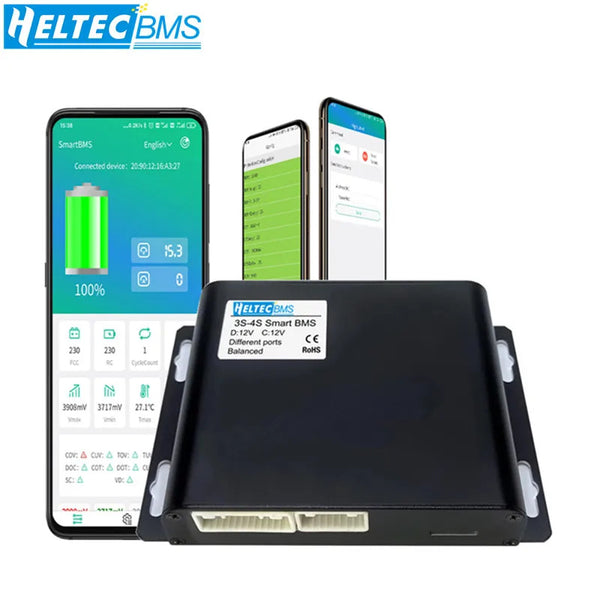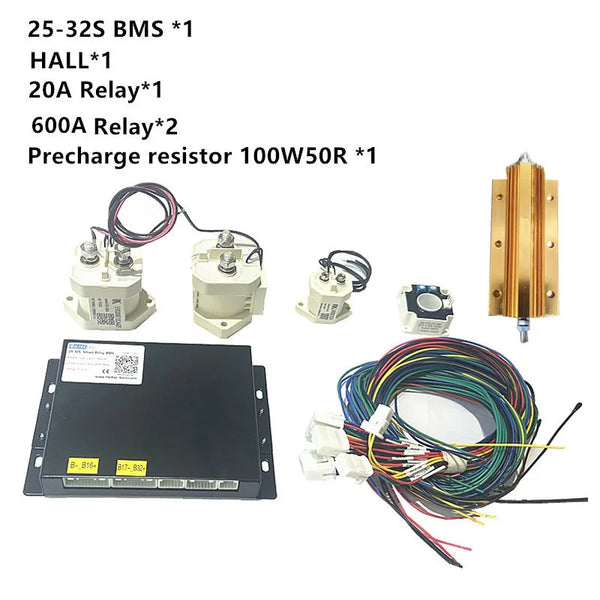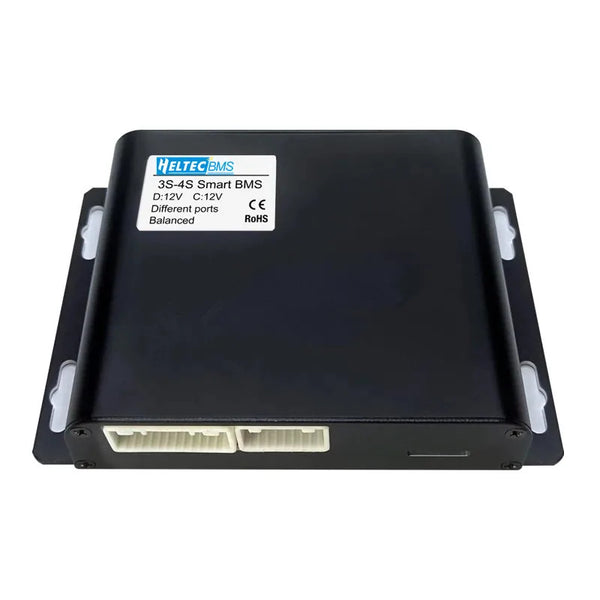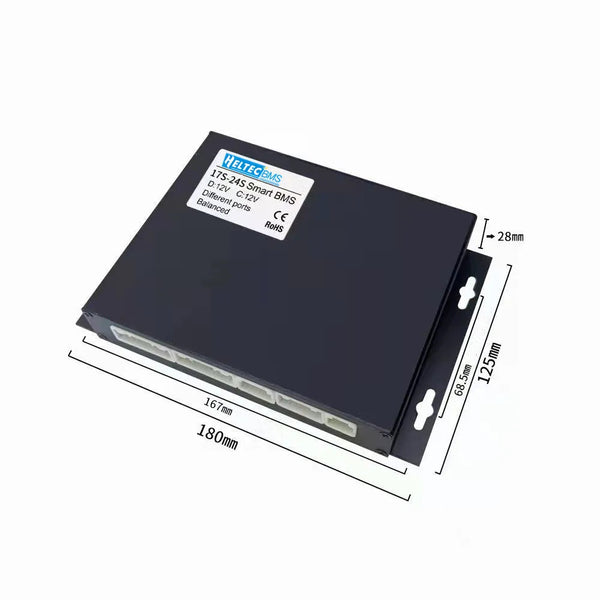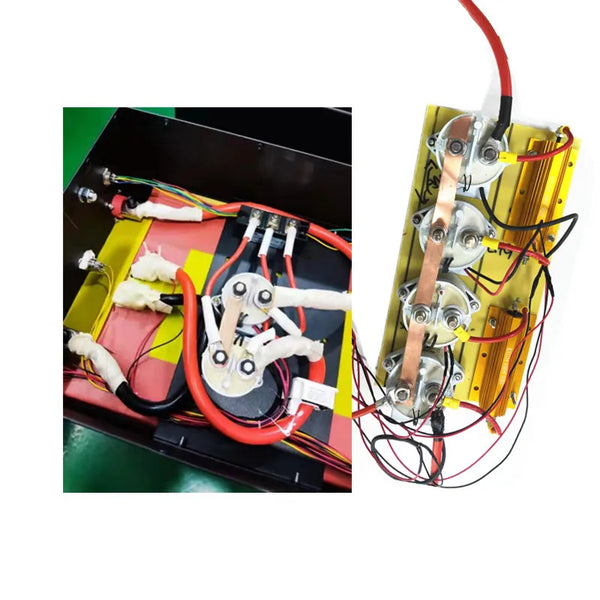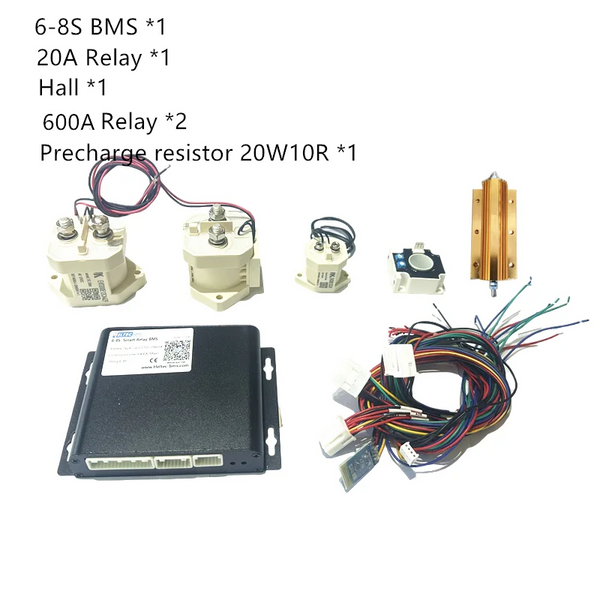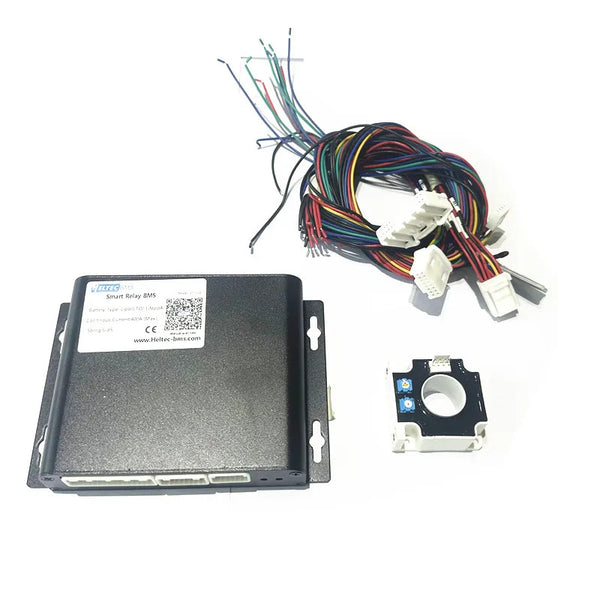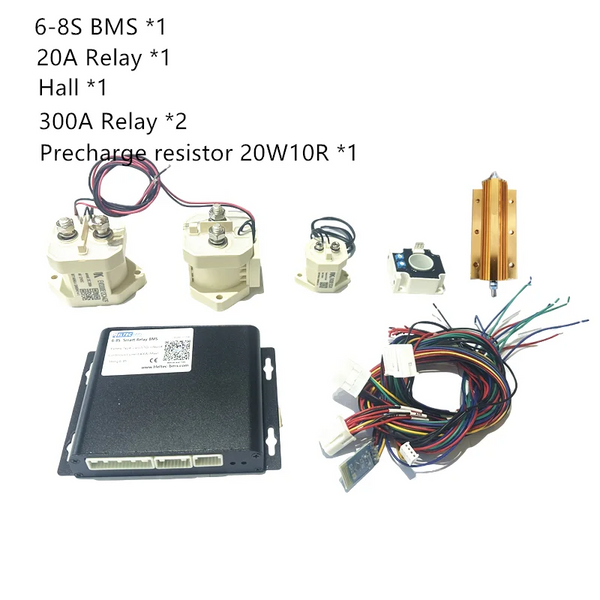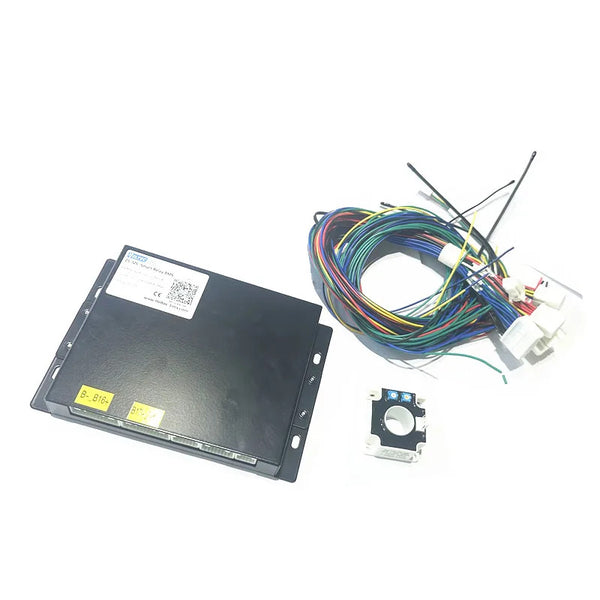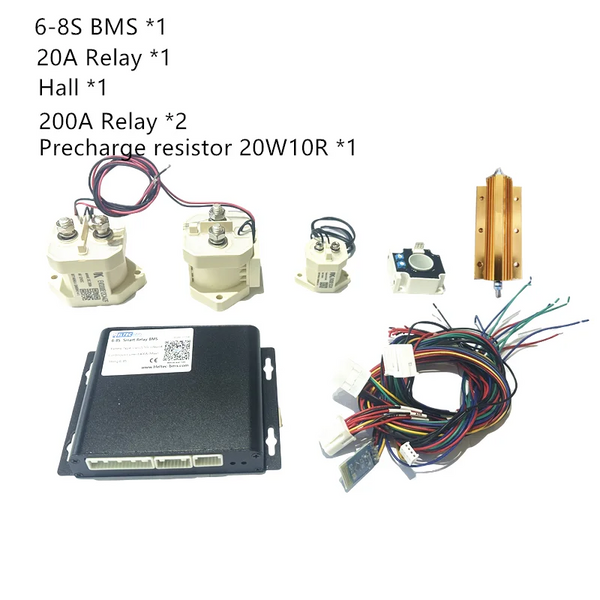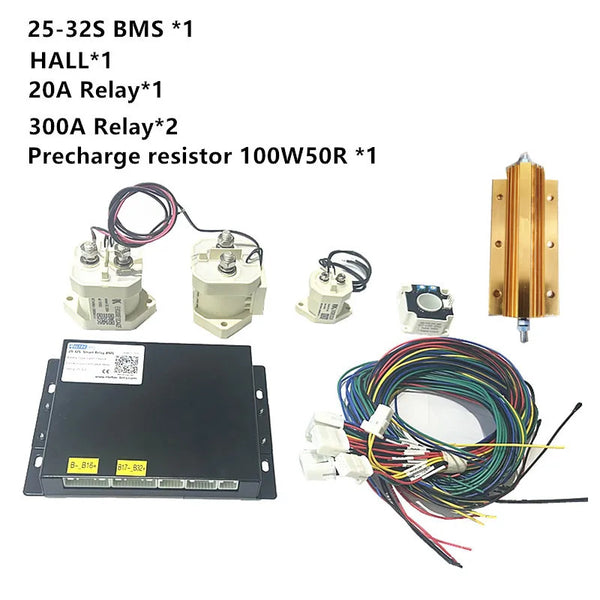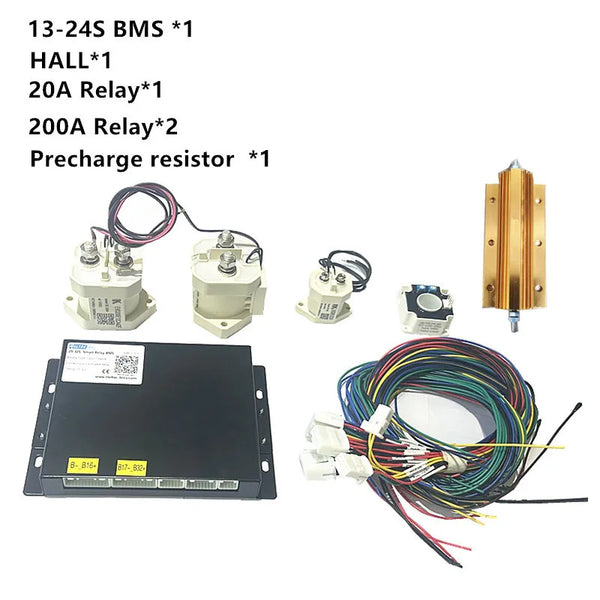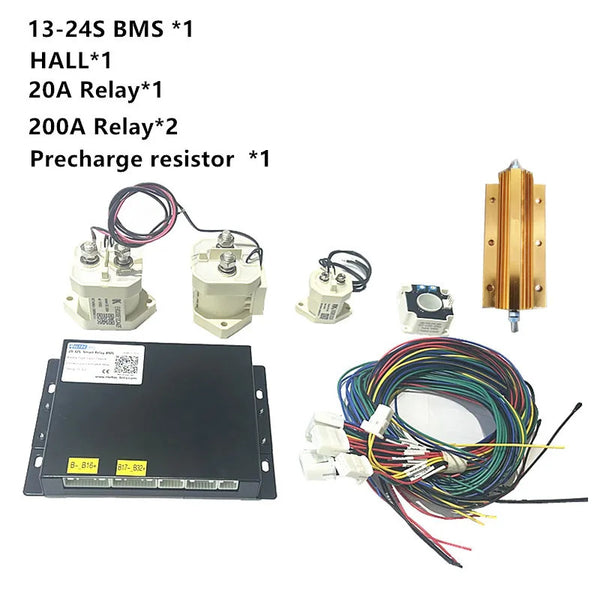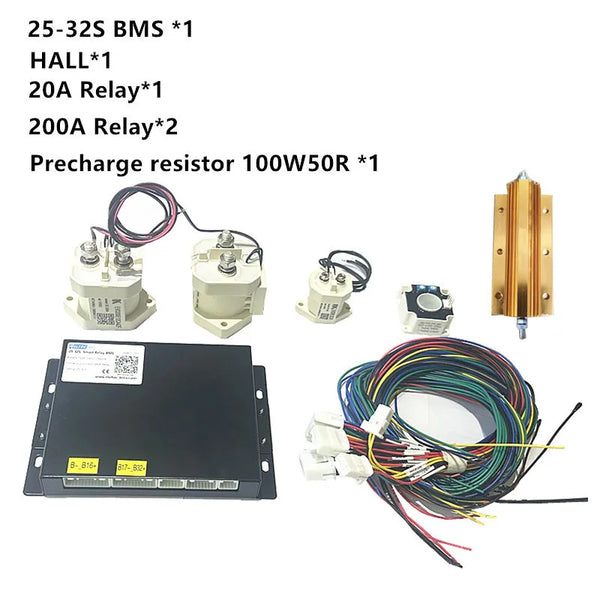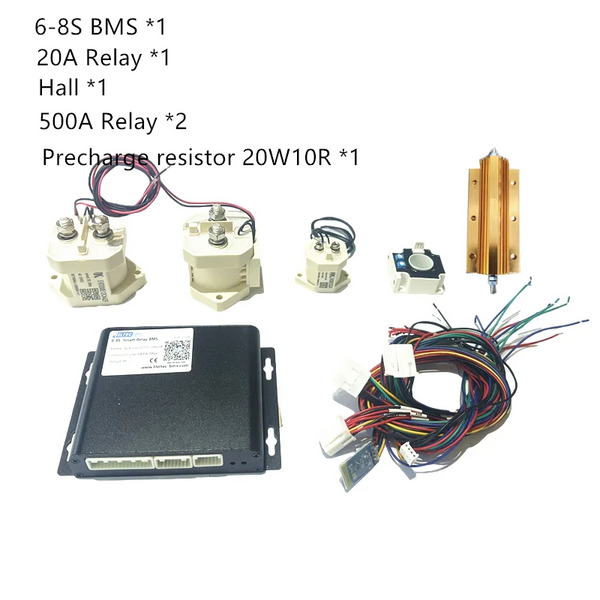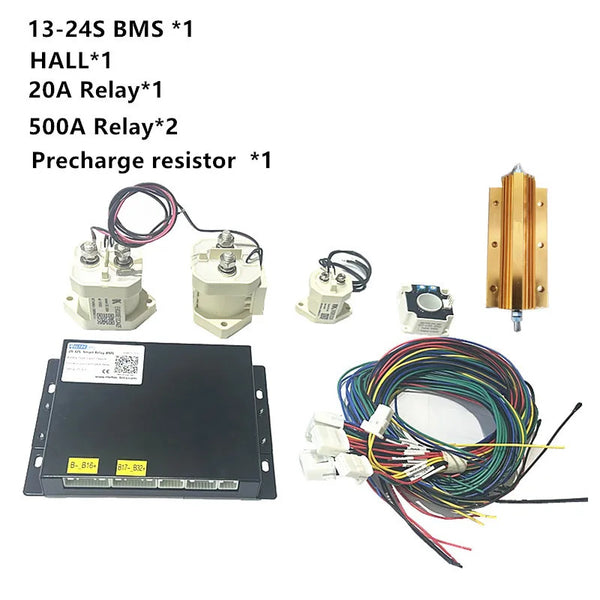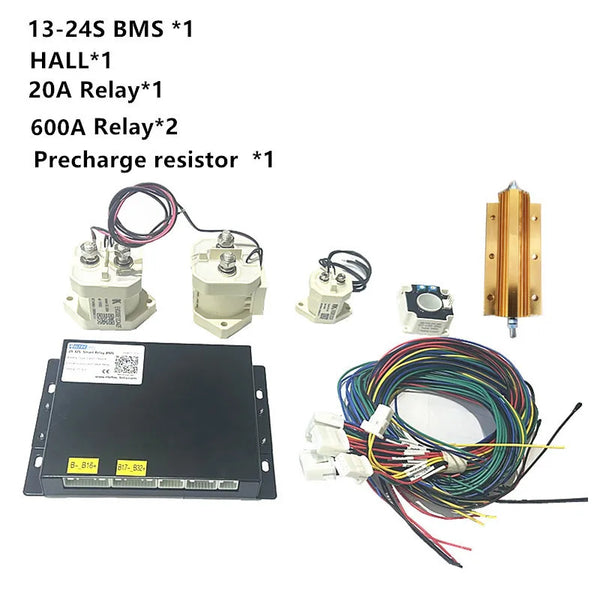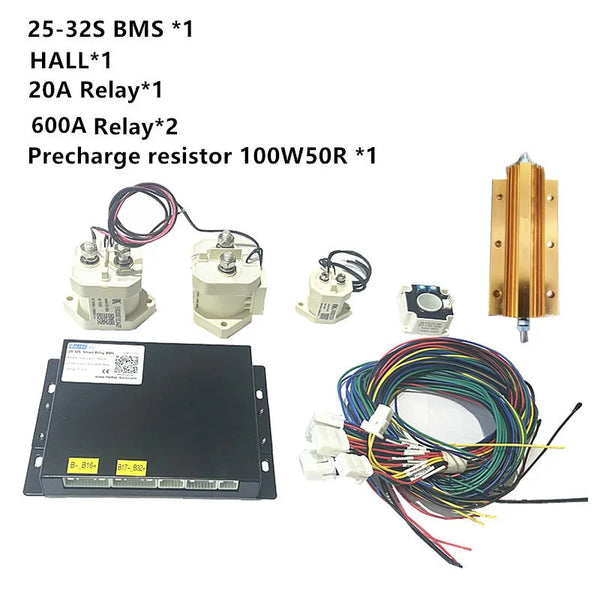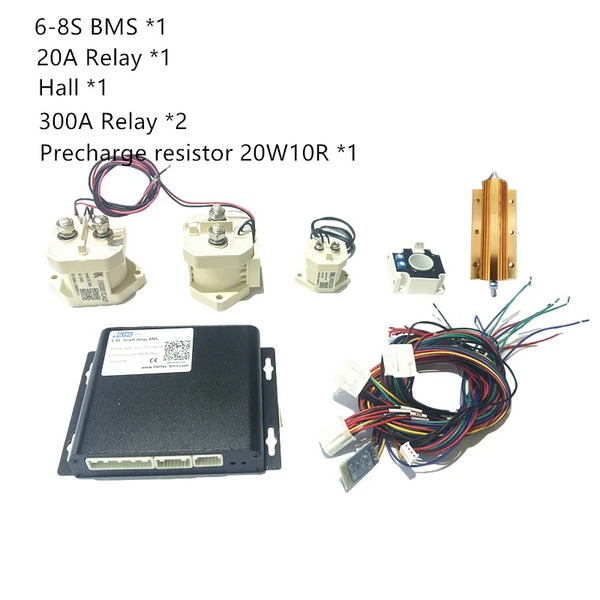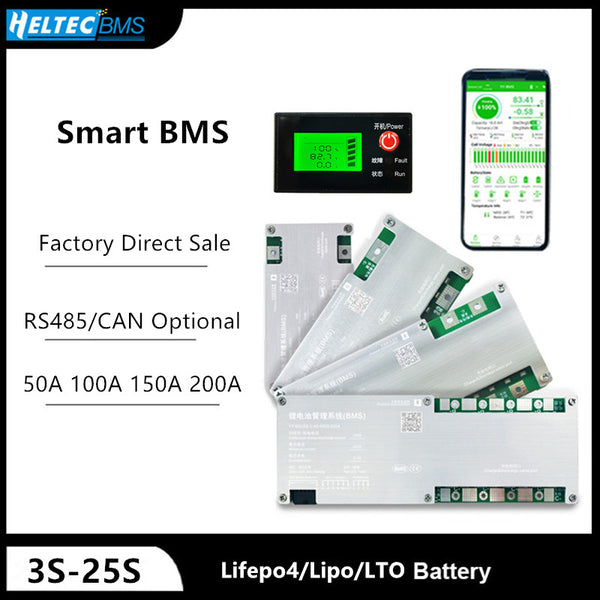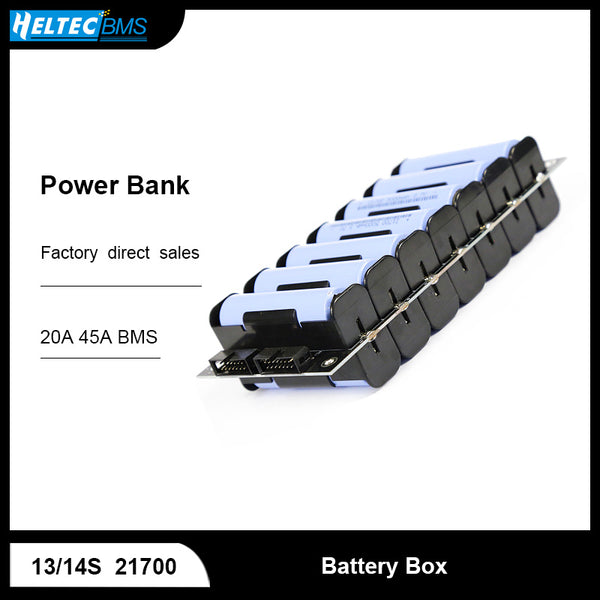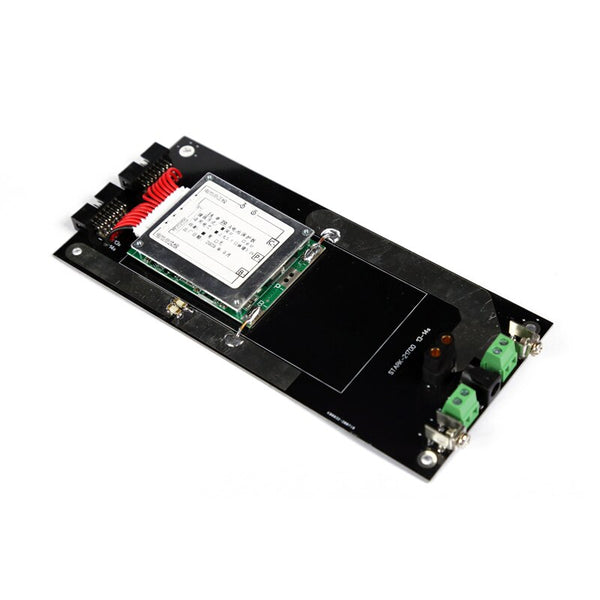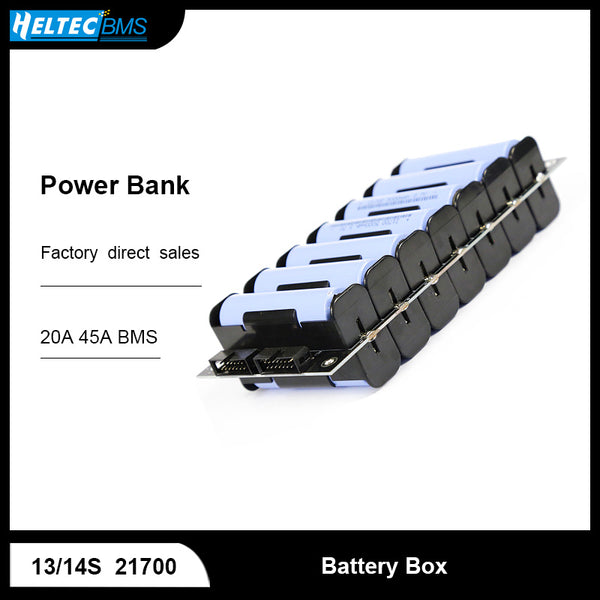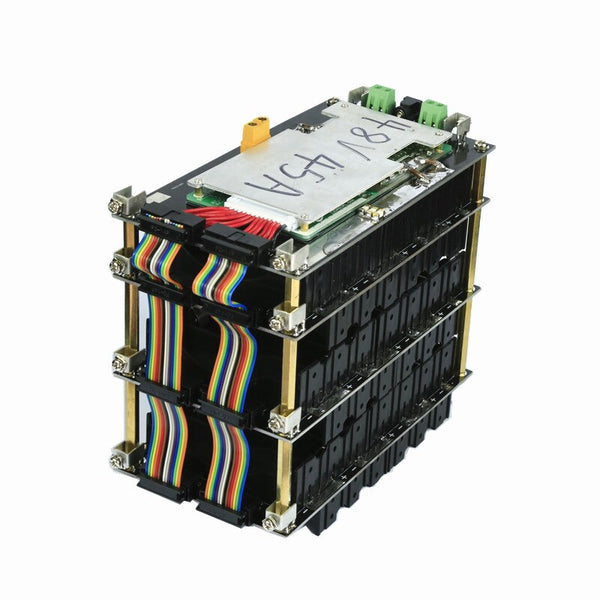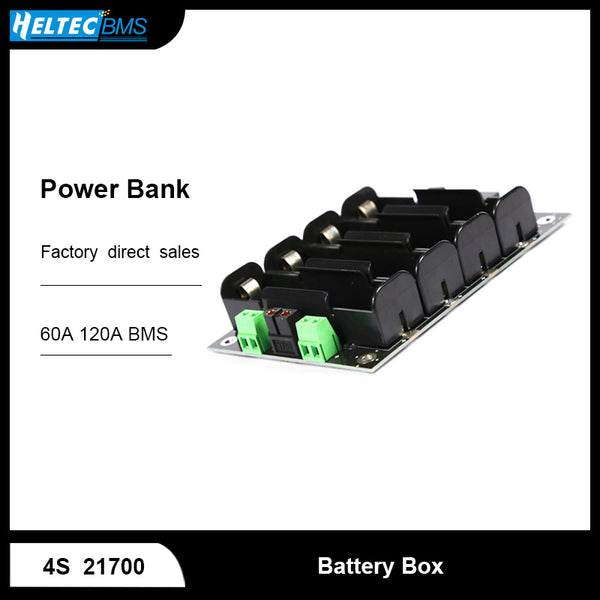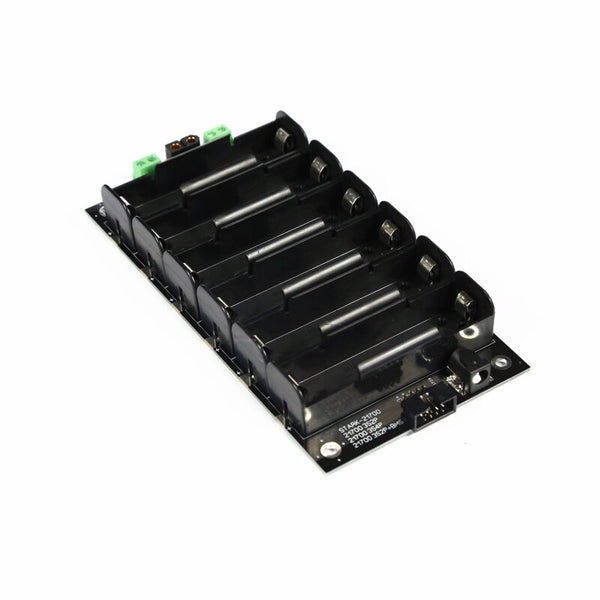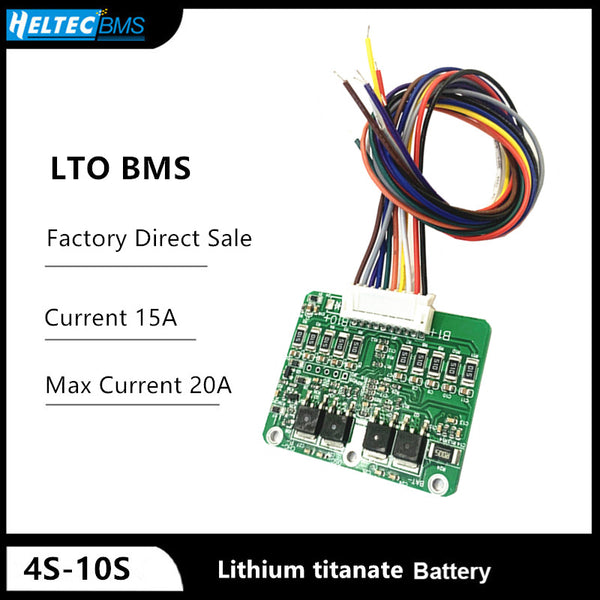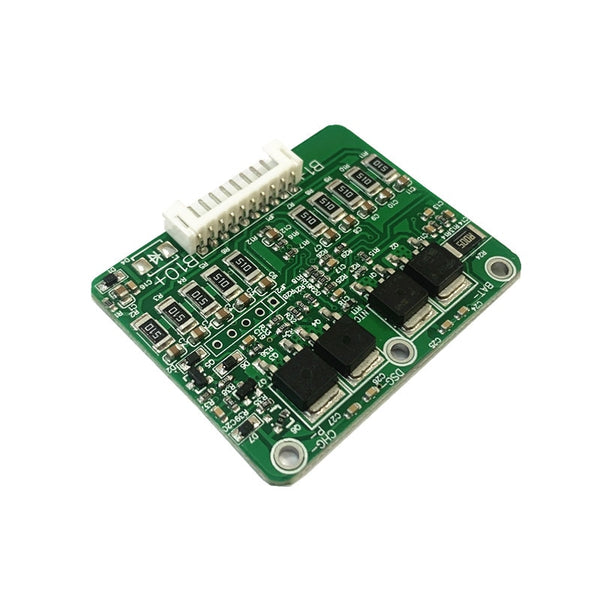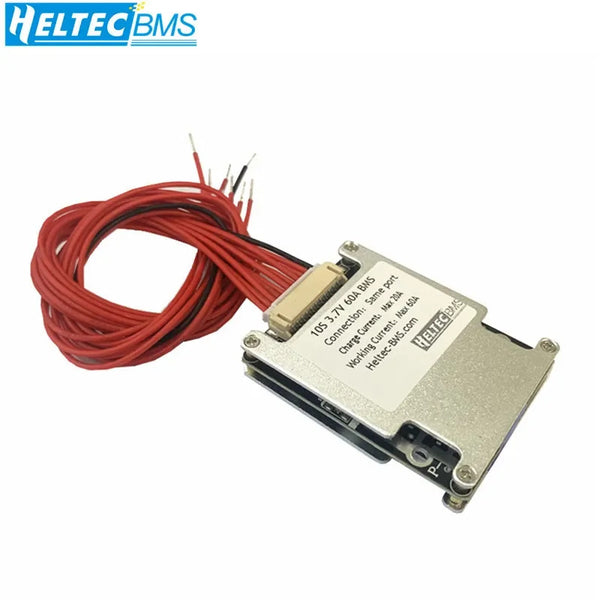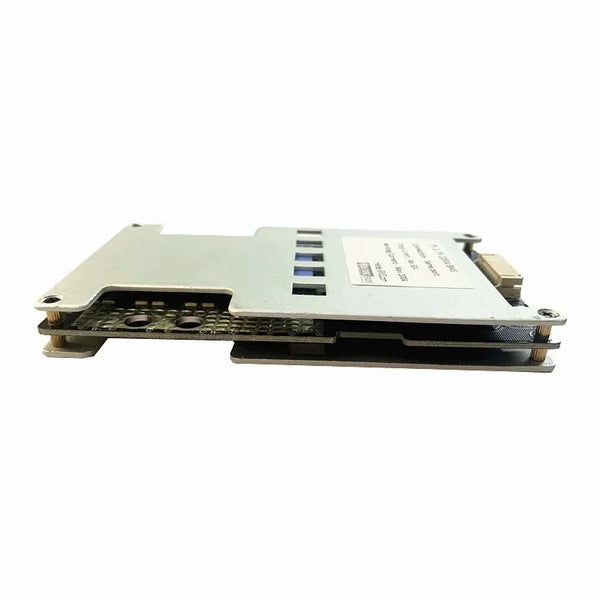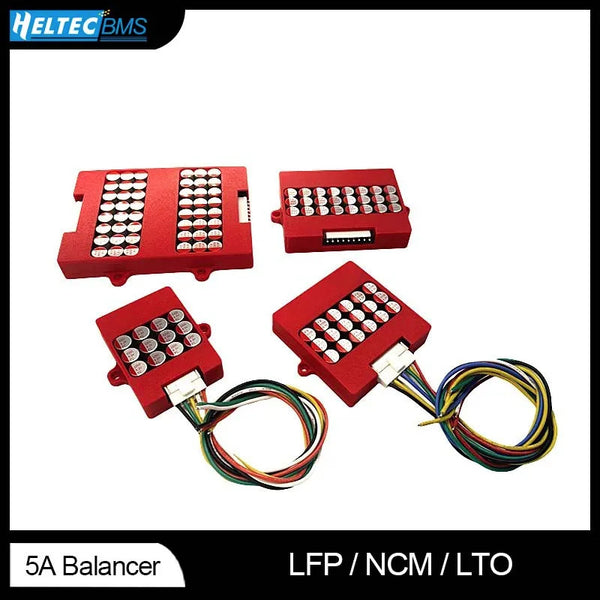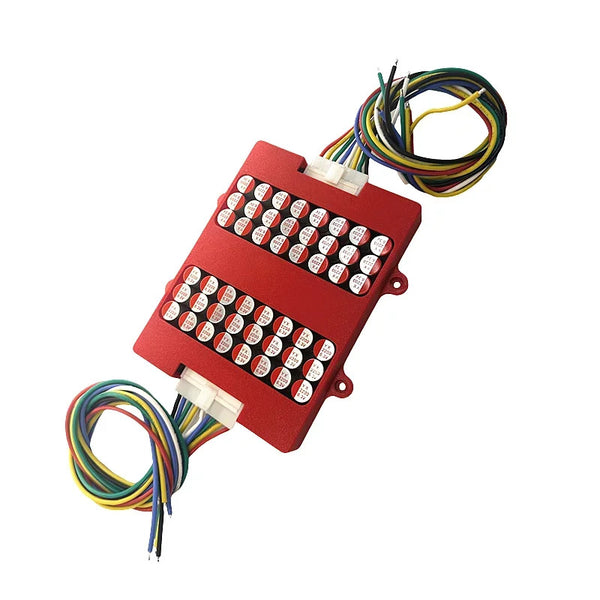Heltecbms Smart Relay BMS 600A 500A 4S-32S lifepo4 bms 96v 60v 48v 200A 300A 8S 13S 16S 24S BT 485 CAN for Lithium Battery Pack
Feture Voltage requirements 10~20V~55V~120VDynamic self-consumption: ≤1.5WStatic self-consumption: ≤50uASystem startup mode: external soft switch signal triggerSOC estimation difference: ±5%Balance current: 60mAWorking temperature: -40~85°CSupport battery pack: 3-4S, 6-16S .17-24SSingle string voltage collection range: 0~5VSingle string voltage collection error: ±10mV FSTotal battery voltage collection range: depends on specificationsTotal battery voltage collection error: ±100MV...
Feture
Voltage requirements 10~20V~55V~120V
Dynamic self-consumption: ≤1.5W
Static self-consumption: ≤50uA
System startup mode: external soft switch signal trigger
SOC estimation difference: ±5%
Balance current: 60mA
Working temperature: -40~85°C
Support battery pack: 3-4S, 6-16S .17-24S
Single string voltage collection range: 0~5V
Single string voltage collection error: ±10mV FS
Total battery voltage collection range: depends on specifications
Total battery voltage collection error: ±100MV FS
Charge and discharge current collection range: >500A
Charge and discharge current collection error: ±2%
NTC temperature control collection range: -40~125°C
NTC temperature control check error: ±1°C
Communication:
1* UART Support Modbus protocol
1*Isolated RS485 interface, support Modbus protocol
1*Independent CAN2.0B interface
Ternary Lithium Battery
Overcharge protection: 4.25V
Charge release protection: 4.15V
Charge detection delay: 1000mS
Discharge and power failure protection: 2.7V±0.1V
Discharge release protection: 2.9V±0.1V
Discharge detection delay: 1000mS
Charging current: number of strings*4.2V
Continuous current: 200A~500A
Overcurrent protection: 200A *3-8 Times
Overcurrent detection delay: 3000mS
Overcurrent release protection: disconnect the load
Short-circuit protection: load short-circuit through the protection board (no direct short-circuit BMS)
Charging and discharging temperature: ≥75°C
Reset social equipment: <50°C
Condition range: -20°C ~85°C
Opening conditions of balanced pressure difference: 0.02V-0.05V
Lifepo4 Battery
Overcharge protection: 3.65V
Charge release protection: 3.55V
Charge detection delay: 1000mS
Discharge and power-off protection: 2.4V±0.1V
Discharge release protection: 2.6V±0.1V
Discharge detection delay: 1000mS
Charging current: number of strings*3.6V
Continuous current: 200A~500A
Overcurrent protection: 200A *3-8 Times
Overcurrent detection delay: 3000mS
Overcurrent release protection: disconnect the load
Short-circuit protection: load short-circuit through the protection board (no direct short-circuit BMS)
Charging and discharging temperature: ≥75°C
Reset social equipment: <50°C
Condition range: -20°C ~85°C
Opening conditions of balanced pressure difference: 0.02V-0.05V
The scheme of control relay
Compatible with battery pack.
App modifies parameters, supports Li ion and lifepo4
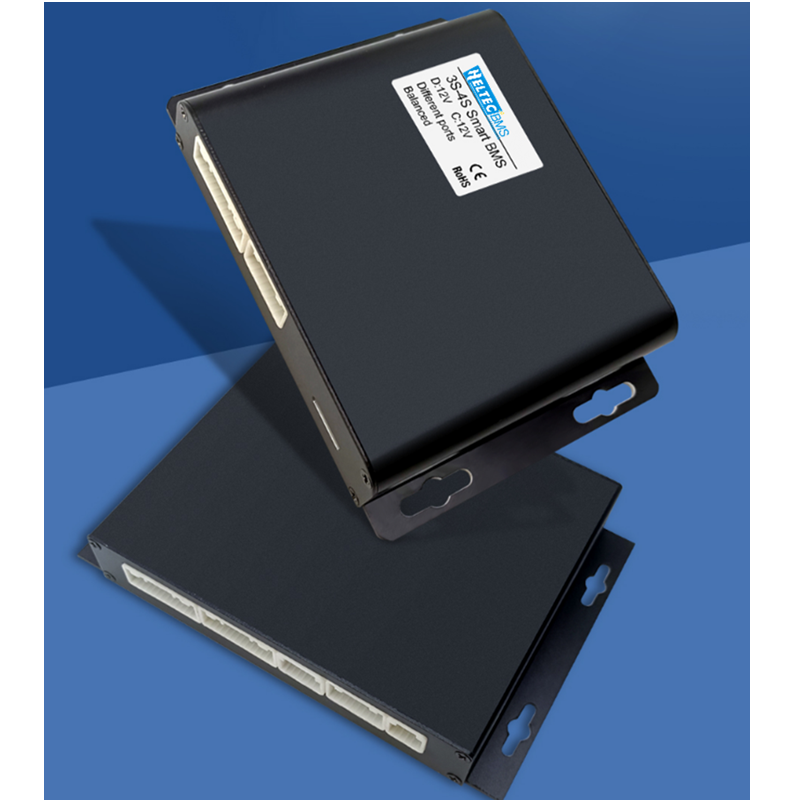
Products schematics
It can control 2-4 relays to control power off, connect with Hall sensor and shunt, and charge and discharge different ports.

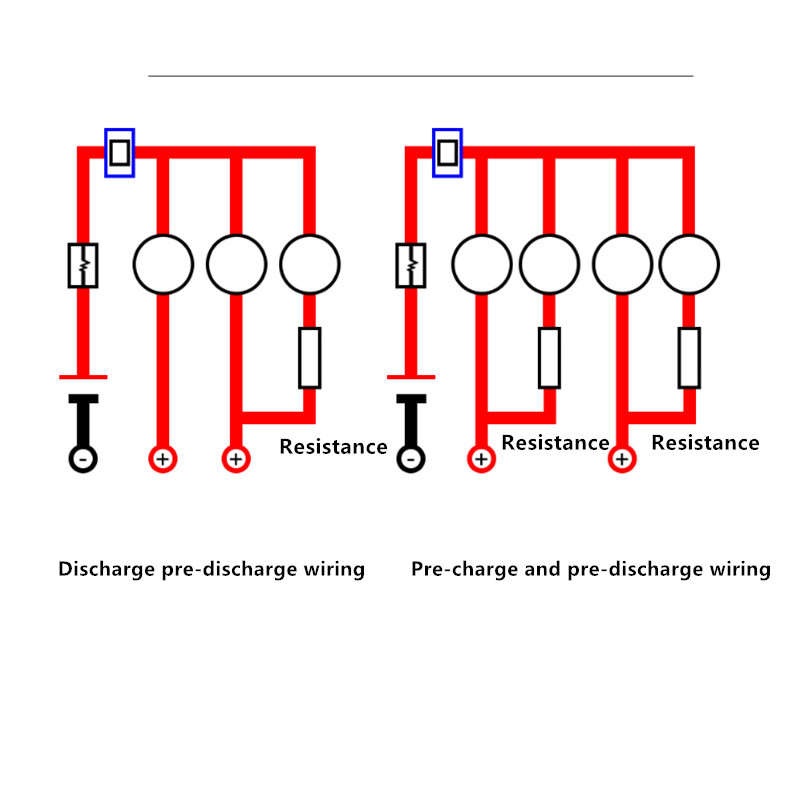
DC relay
Customers need to equip their own relays, select the required current, and support the choice to cut off the positive or negative wire.
Various mainstream relays can be used, with convenient selection and more stable use

3s-4s is collected by shunt and 6s-24s is collected by Hall sensor.
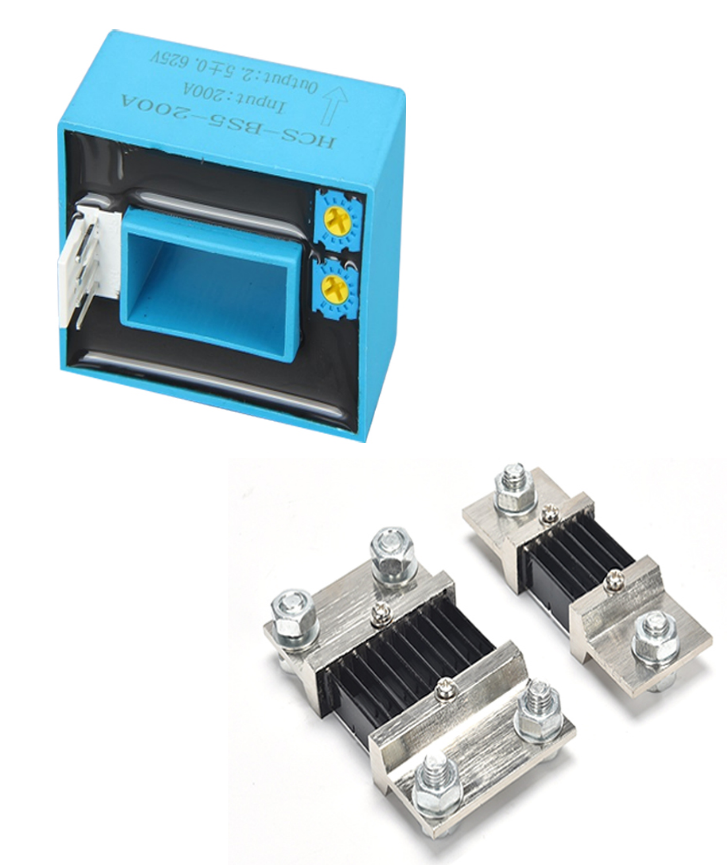
Cables mark
Each cable has a corresponding mark to facilitate customers to identify the corresponding function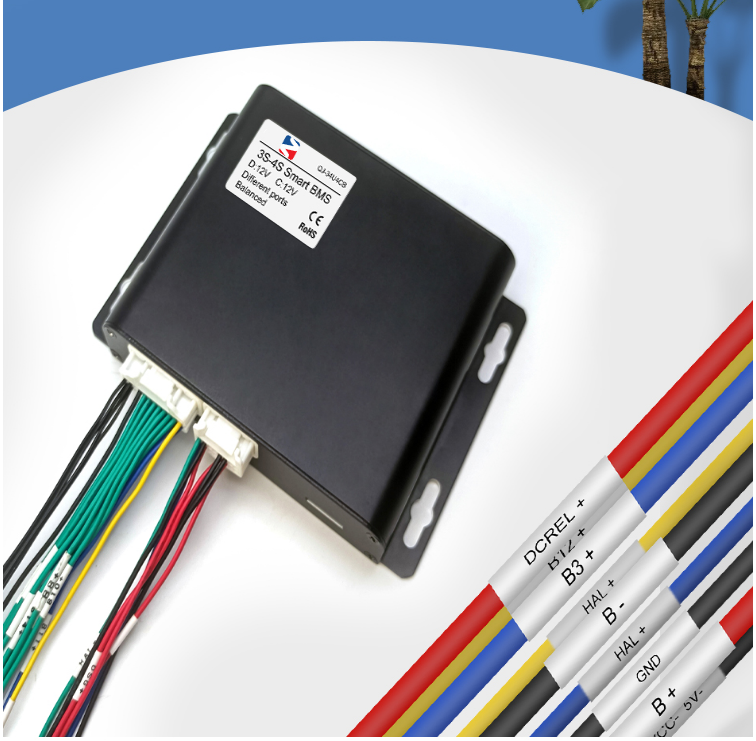
Bluetooth module
Bluetooth transmits signals, mobile phone APP receives information, and the effective distance is within 10 meters.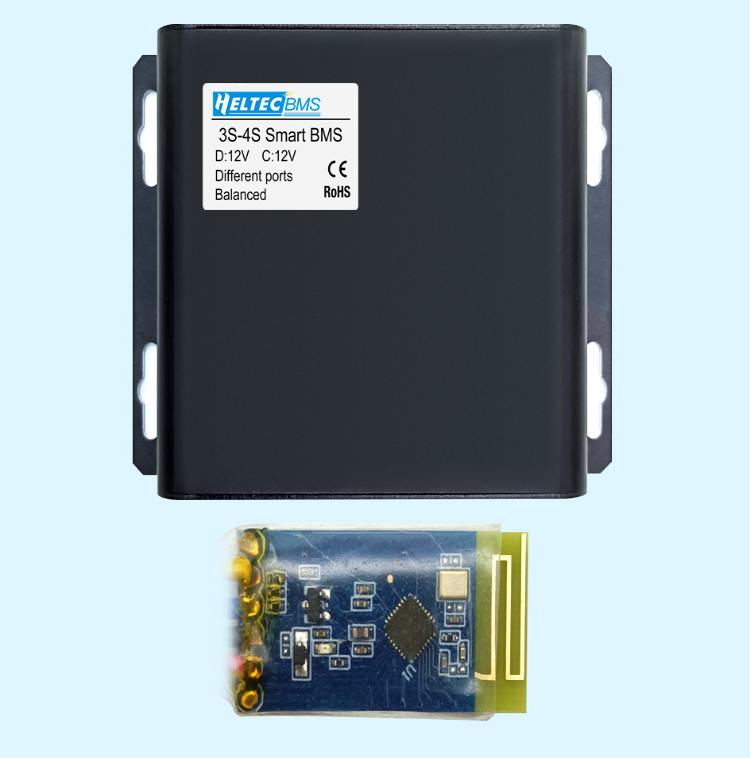
APP
You can view the battery status and adjust the BMS parameters by Phone Bluetooth APP. If you don’t know how to use it, please contact us to get the English manual.
Note: iPhone can only view parameters but cannot adjust parameters.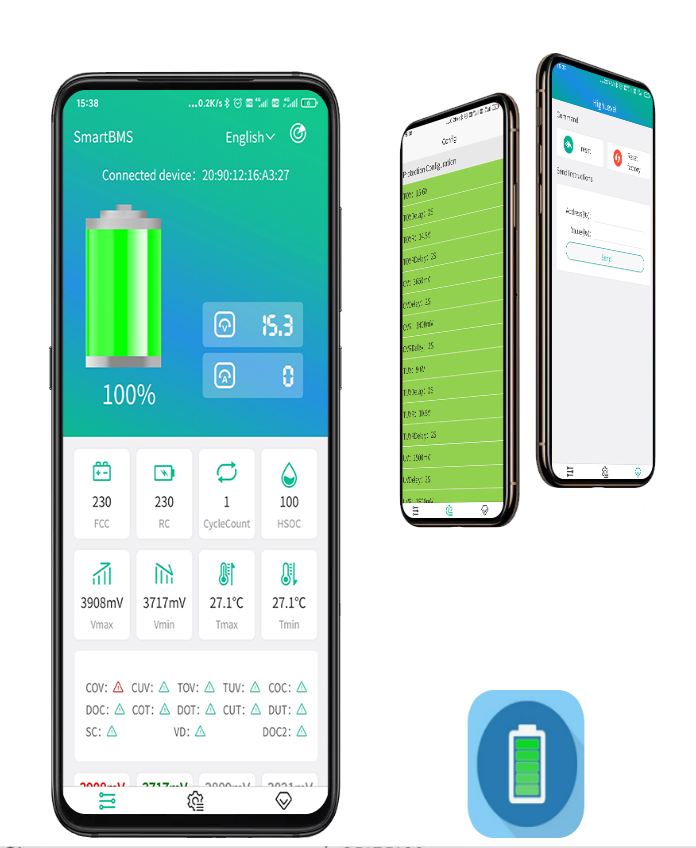
Balance Function
After setting the battery voltage difference between 0.02V-0.05V, it will automatically turn on, and the balance current will be 60mA.
*This balance power can only play an auxiliary role. If the actual deviation is large, a special balance instrument is required


